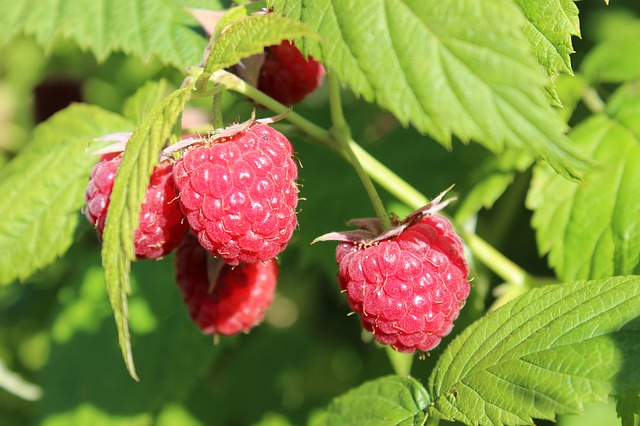The best seasons for planting raspberries are autumn and spring and here’s how to prepare the land and nurture seedlings! It is best to plant them from October to April, provided that the soil is ready and that temperatures are not too low since the sprouts are strong enough by the time spring comes and begin to grow normally.
Planting raspberry can be done by using mature seedlings (autumn and spring planting), but it is important that the sprouts are shortened before planting by a quarter of their length and then immerse them in a diluted slurry mixture of water and equal parts of bovine manure and clay with the addition of a disinfectant.
Raspberries are usually planted at the same depth as they were prior to extraction in the nursery, but in practice, due to a certain sagging of the soil, the same fruit is planted 4-5 centimeters deeper.
Planting raspberries
Planting is usually performed in cloudy weather, while the planting technique depends on the level of land preparation. If the soil is well-prepared, the planting can be done in furrows (which in practice is the most common case). However, if the plot is poorly prepared, individual holes for raspberries measuring 20×20 centimeters should be dug, which will enable the necessary depth and proper arrangement of the raspberry seedlings.
The cloudy weather is most suitable for planting, and the technique of planting is not significantly different from the planting technique of other fruit trees. Namely, over a layer of fertile soil, which covers the seedlings, a layer of burnt bovine manure is applied in the amount of 1-2 kilograms per plant and 0.1 kg of NPK fertilizer 8: 16: 22. Then the soil around the new plants, with a slight bumping , is completely covered with soil.
After planting, especially if immediately after planting there is probability of no rainy days, each seedling is watered with 3-4 liters of water. Shortening planted seedlings represents the last act which involves planting techniques.
It is performed on 3-4 buds, that is, about 20 centimeters in length, and this is due to better reception and stimulation of higher vegetative power of growth of future growth. If the seedlings are shortened more, it can easily happen that the buds you left do not grow. The new stems will soon die.
If you leave them a bit longer with more buds, then they are burdened by new growth, which can also lead to the dying of the new plant.

